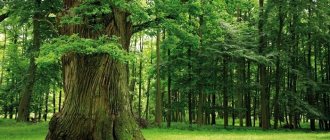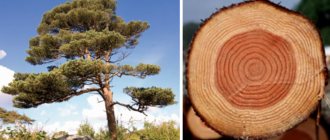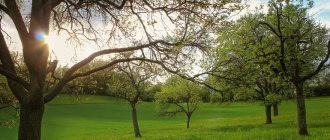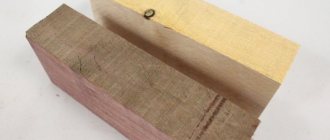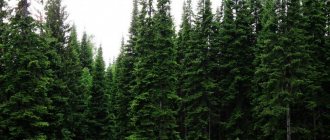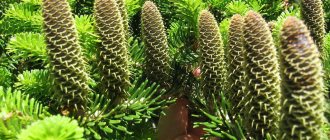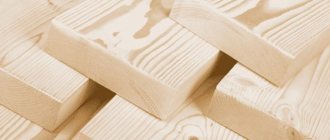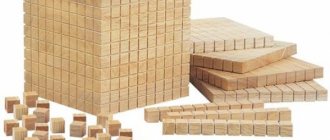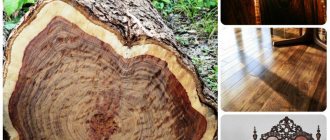Evergreen shrubs and trees in the garden do not lose their attractiveness during the winter months. Coniferous trees have double benefits all year round. The resinous aroma cleanses and invigorates the air on warm and cold days. To know which plant to plant, you first need to become familiar with the world of the most ancient plants.
Characteristics of coniferous species
Almost all conifers are evergreen perennials. They have certain characteristics:
- needle-shaped leaves;
- high resin content in bark and wood;
- Service life more than 100 years.
They reproduce by seeds embedded in cones. They are covered only with scales, but are not protected by a closed cavity. This determines whether the species belongs to the group – Holospermidae. Pollination of seeds occurs with the help of wind.
The vegetative method of propagation is not applicable in their case; only cypress trees have this ability. Gymnosperms are one of the most ancient groups of plants. Scientists believe that their protoplasts were extinct ferns.
The geography of this class extends from the equator to the boundaries of permafrost. Each climate zone has its own species.
The height of most trees, especially in the wild, often exceeds 100 m, but gardeners have developed many low-growing and dwarf varieties for summer cottages and garden plots.
Peculiarities of propagation of coniferous trees
Reproduction of conifers is simple compared to angiosperms. The pollen that is produced in the male cones is carried by the wind, lands on the female cones on another tree and fertilizes them.
After fertilization, seeds develop in the female cones. It takes up to two years for the seeds to mature, after which the cones will fall to the ground and the seeds will be released.
READ What kind of tree is larch?
Pine
These trees with a slender trunk, less often shrubs, can grow up to 30 m in height, some wild species reach 80 m. Their average age is 150-200 years, although there are long-lived specimens that have celebrated their 5000th anniversary. They are not capricious, frost-resistant, tolerate drought well and require minimal care. The main condition for successful cultivation is excellent drainage, allowing moisture to escape.
Pine
Likes well-lit and spacious rooms. It prefers sandy loams and clays and is often found in rocky, nutrient-poor areas. Of the many species, mountain pine is the most popular among gardeners. It is undemanding and does not require special care.
There are many varieties to choose from, perfectly adapted to the existing conditions, with heights from 60 cm to 10-15 m. The seedlings are striking in their diversity: with a typical crown shape, columnar, elliptical, bush. Pines also differ in the color of their needles - from dark green, monochromatic at any time of the year, to variegated, when young needles are clearly lighter than last year’s.
Spruce
This genus includes about 40 species. These slender trees feed from the root when young. Over time, it dies off, and its functions are taken over by lateral branches located close to the ground. This feature of the root system makes spruce trees sensitive to winds. The height of these trees can reach 40 m, and their lifespan can be up to 300 years.
The oldest spruce tree in the world grows in Fulufjellet National Park (Sweden), which is over 5,500 years old. Seedlings are planted away from buildings - spreading roots can seriously damage even stone buildings. Choose a place with good lighting; in the shade the crown forms asymmetrically, and varieties with multi-colored needles lose their high decorative value. The plant is undemanding to soil composition, but develops better in acidic soil.
In addition to Norway spruce with reddish-brown bark, blue spruce with glass-green needles, usually in compact varieties up to 2-3 m high, as well as in variegated varieties, often decorates rural properties.
Ideas for using fir trees in landscape design
Cedar
Cedar, or Siberian cedar pine, is rarely found in garden plots: this tree requires special care at a young age, although in its natural habitat, in the taiga, it grows without problems. The main feature of this species is its very short growing season - only 45 days. Although this tree is often called a giant tree, its slow growth and variety of new varieties make it suitable for decorating roofs.
The place for planting the seedling should be chosen in such a way that the adult plant has a free space with a diameter of about 10 m. The area should be open, but young plants up to 10 years old need shading, especially during periods of excessive heat.
The soil should have a neutral pH, be loose and well-drained. The plant loves regular moisture and fertilization.
True cedars are considered to be Lebanese, Himalayan or Atlas cedar. Unlike their Siberian counterpart, their seeds are not edible. The famous nuts of the Siberian pine - the pride of Siberia - taste like the seeds of any other pine, differing only in size.
If you have patience, garden varieties of Siberian pine can be grown in garden plots in various regions, and in compact sizes. But only some varieties bear fruits of sufficiently high quality, others are used only for decorative purposes, including for creating bonsai-style compositions.
Fir
This elegant tree is subject to the vagaries of cultivation, but its beauty and healing properties are worth the effort. Of the more than 50 species, dwarf and short-haired varieties of balsam fir, Korean fir, Caucasian fir and creeping varieties of Fraser fir are successfully used in landscaping. These species are a gardening achievement that cause minimal trouble for gardeners.
This species is perfectly adapted to shady places, but does not like wind. Therefore, they are planted so that they fully comply with these requirements, which is especially important for young trees. The best soil is clay, which does not retain moisture. Just remember: all spruces are very sensitive to polluted city air and are only suitable for country houses in clean areas.
Larch
This species sheds its needles once a year with the onset of cold weather and is often used to decorate garden plots. Having a bonsai shape, it retains its decorative appearance even without needle-like leaves.
Long-lived larch (lives more than 500 years) has 20 species. All except Japanese larch are shade-tolerant. Fertile soil with good drainage and neutral pH is required.
The height of the trees usually reaches 30-40 m, but this species lends itself well to pruning, so ordinary full-grown trees can be planted in the chosen location without fear. Modern varieties, bred from the European variety for decorating small spaces, have increased decorative qualities.
Weeping spruces or spruces with a cushion-like habit are very attractive. Superminiature specimens are grown in containers and can be planted where natural conditions do not allow them to be grown in open ground.
Ketelery
An exotic conifer found in the wild in the foothills of Southeast Asia. It is heat-loving and therefore grown in the subtropical zones of the Russian Federation - on the Black Sea coast in the Krasnodar Territory and in the southern regions of Crimea.
The plant itself is not very decorative and is not valuable as a source of fruit. It is usually grown as something exotic to emphasize its originality.
Hemlock
Rosewood is a real find for owners of small gardens. Trees are naturally compact; dwarf species can be classified as ground cover plants. The main distinguishing feature of this species is its spreading branches, which give a special charm to every corner of the garden.
Plant in semi-shaded areas on fertile, loamy sand or sandstone.
The worst place is near busy highways: trees do not tolerate polluted air very well.
Application
The champion in popularity of use in construction, interior decoration, and furniture production is pine wood. It is used for the following purposes:
- construction of load-bearing structures of residential and commercial buildings, floors, frames, rafters and piles, scaffolding;
- interior decoration of walls and floors (lining, boards, plywood, particle boards);
- production of frame furniture;
- raw materials for the pulp and paper industry;
- resin is used in the chemical industry for the production of turpentine and rosin;
- essential pine oil is used in perfumery and pharmaceuticals;
- modern shipbuilding - deck linings, internal lining, mast spars.
Spruce is widely used. It is made from:
- board, timber, plywood;
- skirting boards, platbands;
- furniture;
- stringed musical instruments, this is due to their high elasticity (the top soundboards of the famous Stradivari, Guarneri and Amati violins are made from spruce);
- cellulose
Larch, enriched with resinous substances, is recommended for the production of piles and sleepers due to its resistance to moisture and strength; it is often used in shipbuilding and at hydroelectric power stations. A good option would be to choose larch for finishing a pool or bathhouse. Larch parquet serves for many years (an example of this is the perfectly preserved floor covering of the Ostankino Palace of Count Sheremetyev). Previously (until the 19th century), larch was highly valued and was not sold to private individuals. The main flow of raw materials was sent for shipbuilding, and if it was used for construction, then only for selected buildings (Winter Palace, Moscow Kremlin, St. Basil's Cathedral).
Siberian cedar has soft reddish wood with a very beautiful texture. In terms of resistance to decay, it is superior to spruce and fir. The production of carpentry, furniture, lining and floorboards from this material (especially for baths and saunas) is quite popular. A large amount of raw materials is used to make pencils. It is also used to make pickling tubs, chests and storage chests. Phytobarrels—unique cedar mini-saunas—are in great demand. Fir wood is easy to process, weighs little, does not have a pronounced odor, so it is convenient to use for the manufacture of various containers for food products: barrels, boxes, boxes. They also make window and door frames and baseboards from it. One of the main areas of application is the pulp and paper industry.
Soft and light cypress wood has long been used for making church utensils and icon boards. Durable, rot-resistant, and almost non-swelling when wet, juniper wood today often becomes a raw material for various crafts and dishes. Previously, piles were made from this rock (for example, in Venice) and used in shipbuilding.
Yew wood has also gradually lost its popularity as a building material and is found only in the form of veneer, used in arts and crafts and for creating musical instruments.
According to the processing method, all lumber is divided into:
- edged;
- unedged;
- one-sided edged.
Coniferous wood blanks are:
- sawn;
- glued;
- calibrated (dried and sawn to a given GOST size).
According to appearance and size they are divided into:
- board;
- lumber;
- thin;
- thick.
Classification of lumber by grade - the assortment is assessed according to approved GOST standards. GOST 24454-80 and GOST 8486-86 regulate the requirements for edged and unedged softwood lumber and distinguishes the following types:
- beam and whetstone;
- board;
- sleeper;
- lagging;
- croaker;
- rounded log;
- laminated veneer lumber;
- block house.
For long-term protection and decorative finishing, wood can be coated with a tinting antiseptic. Since the structural feature of most conifers are channels filled with resin, the raw materials of such species must be de-resined with a special agent and preferably bleached. Resin-free wood is easier to paint and varnish with better quality. This can be done with technical acetone or a mixture of soda ash and water.
All softwood timber must be specially treated with fire retardants to reduce its inherent flammability.
Use of coniferous building materials
First grade edged boards are actively used for general construction work. It is used for installing roof truss systems, as well as load-bearing structures. Lumber is also used for building houses. It is used for the installation of beams and interfloor ceilings. Coniferous products are used to make fences and subfloors.
READ Amazing facts about chestnuts
Second-grade boards are used in construction (in particular, in the manufacture of formwork). It is used to make sheathing on pitched roofs.
Third grade lumber is suitable for the construction of temporary buildings and small sheds, the production of pallets and various containers.
Cypress
The cypress family includes 19 genera (more than 130 species), which are mainly found in warmer regions.
Unlike their relatives described above, some species are dicotyledonous. Cypress is one of the few coniferous trees that can be successfully propagated by cuttings.
Cypress
The most “graceful” tree has a dense, symmetrical crown. Even fully ripe fruiting cones are not hairy and decorate the branches with small light brown balls. Cypress usually emphasizes the high status of the owner of the roof.
Capricious southerners, evergreen, pyramidal or Arizona species, overwinter well in the central zone if the temperature drop does not exceed -20°C. Low-growing and dwarf varieties are considered the most suitable, since they are easier to cover for the winter.
The best place for planting is semi-shaded, with fertile, loose soil that does not retain moisture. All cypress trees need water, moisture and nutrients.
Juniper
This shrub has an amazing variety of shapes and species. Under natural conditions, it grows almost everywhere except eternal snow and ice. Lush, spreading woody species can be found in mild, warm regions or modest, woody shrubs on mountain slopes and cold regions.
All junipers are very sun-loving and love loose, well-drained soils with plenty of dolomite; they can grow on sparse, rocky slopes. They differ in the shape of the crown - woody, shrubby, creeping, and in the color of the needles and small fruits. They do not require special attention from the gardener, but are extremely demanding on planting conditions.
Juniper varieties
Thuja
One of the most ancient plants is always popular among gardeners. Highly decorative, easy crown formation, healthy air in the garden and the possibility of propagation by cuttings - these are the main advantages of this tree. Most thuja trees are frost-resistant and only need light covering or regular shaking of snow from the branches.
For decoration, you can use a variety of types - columnar or spherical, spruce and ground cover.
All species and varieties tolerate shade, drought and prolonged rainfall, provided there is good drainage.
Cypress
The trees are not large in size - roofing varieties rarely grow above one and a half meters. Their compact shape allows them to be planted in small, well-lit areas.
Pea cypress best tolerates the harsh climate of Russia and at the same time is distinguished by its unpretentiousness. The most difficult variety to grow is Lovson, which does not tolerate low temperatures. Heat-loving varieties tolerate moving from place to place well; they are grown in tubers, leaving them in a moderately warm room for the winter.
Kallitris
This subfamily belongs to the cypress family. Of the 36 species, 30 are subtropical species that cannot be adapted even to the subtropical zone of the Russian Federation. They are grown only in botanical gardens for scientific purposes.
As a decorative element of the landscape, callitris is of no value - in appearance it resembles a cypress, but is disproportionately more difficult to care for.
Known varieties: Torrhoea
This culture has a pyramid-shaped crown. Torreya has hard needles and fruits that look like berries. The seeds grow underground. The tree easily survives severe frosts and can grow even in northern regions. On a production scale, its fruits are used for the manufacture of paints and varnishes. The tree is grown on the site not only for beauty. Its seeds taste like cedar seeds. They are fried in oil and eaten.
Yew
This plant is quite tall and can easily be grown in shady areas. The tree grows slowly, but in bright light it stretches faster. At the same time, yew needles practically do not have a peculiar pine aroma. For planting yew, it is recommended to select places that are not blown away by the wind. The tree, as a rule, serves as a backdrop for rock gardens on the site. Yew has a significant drawback: all types of crops are poisonous, so handling the plant should only be done with gloves.
Cypressaceae: mmjuniper
This culture has a spreading, creeping crown. Its needles have different shades, which makes it more decorative. Juniper grows in almost any soil. This tree is easy to shape and trim. The culture is frost-resistant. Juniper can be grown in rock gardens and rock gardens. Plants can be used to decorate small areas. It is often used for landscaping parks and squares.
Cypress
This is an evergreen plant of the cypress family. The crown of the crop is distinguished by a non-standard crown (pyramidal, curved). These plants have been bred by breeders as both shrubs and trees. There are cypress trees for home growing. The culture does not really like polluted air and when there is little space for it to grow. It is suitable for decorating a sanatorium or recreation center far from large cities. It can be used for decorative group plantings, for decorating alleys, and beautifying buildings.
Thuja occidentalis
Ephedra easily tolerates drought and prefers to be grown in a sunny area. However, not all types of thuja can withstand frost, and direct sunlight can burn delicate wood. The plant multiplies quickly and is easily shaped when trimmed. The crop has many varieties, so it is not difficult for a gardener to choose exactly the one that suits him in size and shape. Thuja can be used to decorate a rock garden, in group plantings, in alleys and along paths. Lower dwarf varieties of thuja prefer to be planted in borders.
Pine: prickly spruce
The Christmas tree is a coniferous tree that is frost-resistant and can grow in a shaded area. Moist soil is not harmful to it. Typically, medium-sized varieties and dwarf species are used for landscape design. For low trees, flower beds and rock gardens are suitable. In addition, they can be combined with other ornamental crops.
If a Christmas tree is growing on the site to celebrate the New Year, then it is necessary to further strengthen the root system. The tree is not deep and there is a possibility that in the wind or a round dance someone will damage the tree by breaking it off. To prevent this from happening, gardeners recommend strengthening its base with tiles to protect the roots.
mountain pine
This plant prefers bright light and is not afraid of dry summer days. When planting it, you need to pay attention to drainage. Often such pines can be seen in stone gardens and arboretums. They can be used to decorate terraces. Dwarf varieties of mountain pine can be combined with heather or rhododendrons. These low-growing trees are best placed in a rock garden. This crop is a perennial with a long life cycle. This feature should be taken into account when designing a garden plot.
Fir
This is a beautiful conifer, which, due to its beautiful appearance, has become widespread among gardeners. The tree has lush branches and soft needles. It is used to decorate alleys in gardens and parks. You can often see group plantings and hedges with fir. Varieties with short height grow slowly. They are usually planted in the shade. They occupy small areas and are quite compact. This is the only ornamental conifer crop that reproduces independently using layering.
Yew
A species found mainly in the northern hemisphere. Like all conifers, they retain their modified green leaves throughout the year. These plants are interesting because they live for more than two thousand years and bear fruit - these are the only coniferous trees that produce berries, not cones.
Yew recovers very poorly - seeds that fall from the mother tree almost never germinate. The reason for this is that coniferous waste, when decomposed, synthesizes substances that kill seedlings.
Yew
Only a few species are grown for decorative purposes: short-leaved, berry, pointed and Canadian. Although yew trees initially exceeded 10 meters in height, breeders have developed miniature varieties. Hybrids with a height of 30-100 cm are popular.
Yew tolerates frost well and is indifferent to light. Experienced gardeners plant it among other shrubs and trees to reduce the risk of frost. Yew does not like stagnant water, acidic soil, wind, drought and dusty, polluted air. It also does not emit essential oils characteristic of all coniferous trees, and therefore has only decorative value. In most yews, all above-ground parts and roots are poisonous!
Torreya
This plant is rarely cultivated in our country, since it is heat-loving, and the most suitable climate is on the Black Sea coast of the Caucasus. The most common species are nutmeg and Torreia nutraceous.
Cultivated exclusively for use; its nuts are edible and are also used in the production of paints and varnishes.
Torreya is demanding, but new varieties with multi-colored needles are gradually winning the hearts of gardeners. Grows well in any soil except highly acidic soil. It makes no demands on soil fertility. Loves good light and some protection from the wind. It tolerates moderate frosts well; you only need to mulch the root zone with a thick layer of organic matter.
The benefits of coniferous plants
Man actively uses coniferous trees in the chemical industry of alcohol, cellulose and various chemicals. Their wood is used for construction and furniture production. Furniture and mattresses are stuffed with cedar shavings.
Dietary supplements, vitamin flour, and essential oils are obtained from needles of various species. The rot and fruits are used as feed for livestock, and the nuts of some tree varieties can be eaten by humans.
Coniferous plantings perfectly purify the air and have a beneficial effect on the environmental situation. They help clear soil from erosion.
Araucariaceae
An ancient genus of coniferous trees, whose age, according to modern scientists, is more than a hundred million years. Most genera grow in the southern hemisphere and only one in the northern hemisphere. Found in tropical and subtropical rainforests.
Agathis
The trees, which often reach heights of up to 70 m, are drought-resistant and grow well in the shade. Loamy, loose, well-drained soil. Plant in ventilated places, protected from the wind. The lower temperature limit is -20 °C.
An interesting feature is the variety of leaf shapes - from typically coniferous, narrow to lanceolate.
Araucaria
Araucarias, unlike agathis, are not frost-resistant and are intended mainly for home cultivation. “Caddy” rarely reaches more than 2 m in height.
In the garden, pots of araucaria are used to decorate flower beds or verandas with good diffused lighting.
Products based on deciduous (hard) wood
There is no standard width for hardwood lumber like there is for engineered softwood lumber, but standard thicknesses apply to hardwood lumber.
The classification and grading of hardwood lumber seems simpler than for softwood-based products. Deciduous trees have the main classification factor - appearance. Hardwood-based products are governed by a standard international classification system.
There are four traditional types of hardwood. The grade is determined by the amount of clear surface a particular board has on its worst side (with hardwood, one side may look better than the other). The highest grade boards based on hardwood are long and wide, with a large percentage of the area free of defects.
The highest quality grade of deciduous wood in the international interpretation is defined by the abbreviation “FAS” (First & Second). This is the highest grade of quality, where the hardwood board has a width of at least 150 mm, a length of 2.5 to 5 meters, and a surface finish of 83.3% on the worst side. Further:
| Grade No. 1 | Board at least 75 mm wide, 1.2 m long, surface finish 66.6% |
| Grade No. 2 | Board at least 75 mm wide, 1.2 m long, surface finish 50% |
| Grade No. 3 | Board at least 75 mm wide, 1.2 m long, surface finish 33.3% |
Redwoods
The tallest and oldest tree in the world, the sequoia, grows in the wild only in California (USA). The branches of the conical crown are strictly horizontal, rarely inclined downwards, the average life expectancy is about one and a half thousand years.
In our latitudes, this tree is not grown outdoors, as it requires a lot of moisture in the soil and air. Bonsai-style varieties grown indoors are more popular. They require a lot of patience and care, but the exquisite beauty of the composition makes all the difficulties worthwhile.
Coniferous shrubs: names and photos
Now get acquainted with such a magnificent group of plants as coniferous shrubs. On this page you see the names and photos of coniferous shrubs for landscape design. The photo of coniferous shrubs shows various types of plot design. The names of coniferous shrubs are given in generally accepted usage.
CRYPTOMERIA CRYPTOMERIA
- Location: best sunny
- Reproduction: acquiring new plants
Cryptomeria japonica (C. japonica). The green leaves turn reddish-brown in winter. K. japonica has a height of 6 m, but at maturity can reach 25 m. 'Elegans', 3 m tall, has feathery foliage; 'Vilmoriniana' is a popular dwarf variety for the rock garden.
JUNIPERUS _
- Location: sunny or partial shade
- Reproduction: acquiring new plants
There are many types - creeping ones, such as Juniperus horizontalis (J.horizontalis); medium-sized shrubs like J. media 'Pfitzerana'; and tall trees such as J. virginiana 'Skyrocket'. You can find junipers with green, gray, blue or yellow leaves.
TISS TAXUS
- Location: sunny or partial shade
- Reproduction: acquiring new plants
Slow growing coniferous plants. Yew berry (T. baccata), 2 m tall, is a popular species for hedges. The variety 'Fastigiata' has a narrow columnar crown shape; 'Repandens' is a dwarf with a height of 60cm. Medium yew (T. media) 'Hicksii' forms rounded bushes.
Mr. Summer resident informs
When you decide to plant coniferous trees and shrubs on your roof, choose the seedlings carefully. To purchase, we only contact specialized nurseries located nearby. This ensures good survival of the plant and its ability to adapt to local climatic conditions. Buying planting material in regular retail stores is a waste of money. In most cases, the plants will be planted in poor quality soil, overfed with fertilizers and hormones, and will require long-term care, possibly without success. Moreover, you should not buy coniferous trees from random sellers on the market. Along with seedlings, diseases and pests may be introduced into the site.
In order for the composition in your garden to bring joy, you should carefully read the rules for planting and growing each species or variety.
Despite many similar parameters, modern hybrid plants often differ significantly in their requirements for soil composition, light and moisture.
In mixed plantings, neighboring plants are selected in such a way that their growing conditions coincide with those required by coniferous plants - the same watering and fertilizing schedules.
Not all coniferous trees live peacefully next to deciduous trees and flowers. To avoid oppressing plants, carefully follow the recommendations of specialists.
Mediterranean or Asian exotics and local varieties adapted to local conditions are used for the following purposes:
- design of ponds, alpine slides, rockeries;
- borders and mixed gardens with low-growing plants;
- Solo and various compositions;
- alleys.
- Hedges zoning the space of the site;
Coniferous deciduous lumber - exchange wood
The information presented relates more to the international classification of building materials. Of course, there are regional standards that change the picture somewhat. However, given the active trade in sawn softwood and deciduous timber at the international level, the information here seems useful to many potential buyers of timber for construction.
With the help of information: ArtOfManLiness
Tags: industrialhow to buildmaterialbuildingConstructioncharacteristics
BRIEFING
Zetsila - publication of materials that are interesting and useful for society. News of technologies, research, experiments on a global scale. Social multi-thematic information - media .
